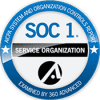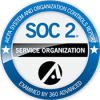Throughout the Coronavirus pandemic, several innovative data tracking tools have been identified to support population-based public health and individual patient level care management. Some of these are less traditional ways to look at health data, and can usefully inform health planning and system of care design strategies. A curious question is, can we use these novel health data approaches to better inform the care management process? A brief review of some of the recent health tracking tools and approaches provides insights for new ways to think about care management throughout the current pandemic and beyond.
As we move from the full blown crisis of the pandemic to the next phases of resolution, novel data sources can help inform health care leaders. There is a range of health data tracking examples to better understand the evolving trends in the spread or decline of the virus. Perhaps the most widely accepted tracker of the pandemic are the maps provided by the Johns Hopkins Corona Virus Tracking Center. Focusing on clinical data tracking and individual level contract tracing, the Center provides actionable information to inform health policy. For up-to-date vaccination rates, the CDC has also developed useful analytic tools. For current care management activities, this data can inform trends in health risk and inform patient level assessments for health system engagement and health improvement activation.
Tracking the economics of the pandemic can also be done through the monitoring of health care expenditures. For example, the Peterson-KFF Health System Tracker has identified how healthcare spending and utilization have changed during the pandemic. Elective and non-essential care has been diminished in the pandemic, and spending on health services dropped swiftly. Expenses for office-based care have also declined amid social distancing and canceled non-emergent procedures. Understanding these trends also helps inform care management teams as they help to re-start health care activities and promote patient engagement. In a post-pandemic environment, tracking the return to health care services and re-engagement of individuals in the workforce can help inform care management. The Georgetown University Center on Education and the Workforce has developed useful tools to track the unemployment and job loss data. By drilling down into their own data systems, organizations such as Medicaid Advantage plans, ACOs, Certified Community Behavioral Health Centers, and others can track declines in expenses and predict likely new utilization trends as delivery systems re-open.
As the pandemic evolves, new and novel data sources can also be used to gain insights into community-level risks and prevention. As an example, by collecting population-level data on aggregate and anonymized human temperature data, makers of web-enabled temperature devices can map data trends that inform influenza-like illness levels. As an example, HealthWeather data maps identify these illness trends and hot spots that can help inform care management teams of the evolving risks for the populations they serve.
Throughout the pandemic and beyond, housing has been a key social determinant. Data sources exist to help health plans and others better understand the communities they serve. For example, data supports the tracking by state the levels of affordable housing. Other innovative and novel data approaches are tracking the impact of social distancing and social re-engagement as the pandemic resolves. OpenTable, the online restaurant reservation service, is producing data on the level of restaurant reservations as an indicator of public trust in dining out and social engagements.
These data source examples and others can inform care management providers as they better understand the trends in their communities for social isolation and re-engagement. Taken together, these data sources can help inform the current status of community trends in Coronavirus spread, other health conditions, and social engagements. By looking beyond the traditional sources of health data, Medicare Advantage Plans, ACOs, Certified Community Behavioral Health Centers, and others can develop expanding perspectives on the populations they serve and the evolving community trends. This perspective also raises questions about what new and/or different approaches care management organizations should deploy in the wake of the pandemic.
By Allen S. Daniels, Ed.D., Director of Clinical Solutions, InfoMC








